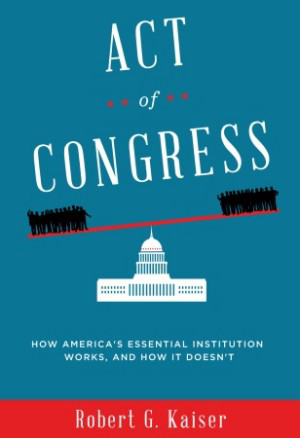

Book review by R. Alan Clanton
Thursday Review Editor
The mortgage meltdown which peaked so famously in September and October of 2008 was as close to total economic catastrophe as anything Americans have faced since the Great Depression. Beginning with bank failures—such as the collapse of Lehman Brothers—and proceeding swiftly and inevitably toward insurance giants like AIG, the crisis triggered the deepest recession since the 1970s. Its effects were, and remain, widespread: empty homes, a credit crunch, bank failures, insurance company insolvencies, a massive devaluation of market values and retirement investments, and a sustained period of unemployment which persists to this day.
There was plenty of blame to go around in every segment of society and across political aisles. The problem was of a bi-partisan making, and in the darkest days of September and October 2008, only a bi-partisan solution would have restored the sort of confidence needed to calm and stabilize the market. The economic wizards at that time—Treasury Secretary Hank Paulson, New York Fed chairman Tim Geithner, and Federal Reserve chief Ben Bernanke—were in uniform agreement that Washington must act quickly, decisively, and without partisan wrangling to bring about an emergency solution.
There was only one little problem: Congress almost never acts quickly, decisively nor sans partisanship—and surely not when they are being asked to write a check for $720 billion dollars…in an election year.
In Robert G. Kaiser’s new book, Act of Congress: How America’s Essential Institution Works, and How It Doesn’t (Alfred Knopf, 2013), we see in illuminating detail the fast-paced, behind the scenes processes that brought about failure, then passage, of the Troubled Asset Relief Package (TARP), and, later, the passage of the Dodd-Frank Act, a remarkable and rare case where complex wrangling brought about a truly bipartisanship solution to an existential threat to the American economy.
Dodd-Frank, named for its chief architects, Representative Barney Frank of Massachusetts and Senator Chris Dodd of Connecticut, was written largely by Frank and his staff of banking experts, and negotiated with skill by Dodd in a Senate still controlled by Republicans like Alabama’s Richard Shelby, himself a ranking member of the Banking committee. Offered unusually close access to the comings-and-goings of both Barney Frank and Chris Dodd, Kaiser illustrates how Dodd-Frank—originally two separate bills eventually integrated into one 1500-page package—worked its way through a contentious legislative process, surviving potentially terminal moments to eventually reach its moment of passage.
Though the book’s title suggests that it is a global primer on the larger issues of Washington—specifically Congress, an institution whose popularity and approval ratings often sag at points so low as to make a mockery of what the founding fathers had in mind when they formulated citizen democracy (see Why Americans Still Distrust Congress, May 21, 2012)—Kaiser’s study is really a handbook of the inner workings of Washington at its best, despite the byzantine and dizzying complexity of how a bill successfully lands on a President’s desk for a signature to become law. The TARP package was an emergency measure—inelegant, awkward, flawed—but perhaps necessary to extinguish a fire which threatened to destroy not just confidence in the market, but the financial system itself. Dodd-Frank was crafted as the long-term solution: a piece of legislation, by some lights (many conservatives and Republicans are still distrustful of the bill’s long term effects) designed to place a measurable degree of regulation and scrutiny into financial and lending processes long left to haphazard and even neglectful oversight. Kaiser begins with TARP, a massive bailout so contentious that it failed outright in the House on its first introduction to a vote (it was passed days later after the markets tumbled even deeper into chaos and collapse), and then takes us carefully into the parallel processes of Frank and Dodd.
Kaiser also illuminates the differences between the two men: Frank, brilliant but combative, irascible, sometimes prickly; Dodd, diplomatic, strategic, and gifted at forging compromise and consensus. Into this mix each politician found frustration with how their work was being reported by a media increasingly partisan in the red-blue divide, and a press largely unwilling to drill down deeply into the complexity that had become the biggest economic crisis in seventy years.
The book is not without flaws: on the whole, Kaiser seems less-than-enthusiastic about conservative and Republican resistance through discussions of TARP and Dodd-Frank—frequent GOP reticence arguably based on principle less than pragmatism, and Kaiser sees little value in exploring the libertarian ethos of a market long overdue for taking responsibility for its own stupidities and failures. Kaiser offers supportive interpretations of the key Democratic figures—many of them old school or new school liberals—and filters the leading players among the GOP through a harsher, sometimes inflexible lens. This can be excused in part by the fact that Kaiser was embedded so deeply into the space around Frank and Dodd. On the other hand, some Thursday Review readers might understandably slip into the familiar media talking point: Kaiser is a Washington Post reporter and a frequent contributor to NPR. Enough said.
But Kaiser gets it right on the hazards of markets left totally unwatched and unregulated: Frank may be as liberal a Representative as can be produced by the Commonwealth of Massachusetts, but he is neither anti-business nor anti-banking. A believer in American economic viability and freedom, Frank nevertheless saw—even before the crash—the perils of such profoundly risky lending in the name of a few extra bucks in fees and profits.
Kaiser’s book is also a clearly-written, easy-to-follow primer on how a bill migrates from inception to passage—not a bad achievement for any writer covering Washington. This book moves quickly and cleanly, and concludes with an elegantly written final chapter titled “Still Broken,” which illustrates how—despite its occasional shining success stories—Congress remains so unpopular in the view of many Americans for its institutional pathologies.
Assigning blame is easy; taking proactive action is harder.